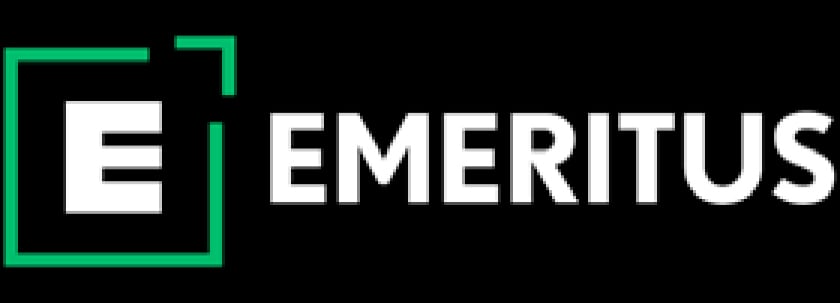7 Essential Inventory Management Techniques: Everything You Need to Know

Inventory management techniques hold a pivotal position in the realm of business operations, acting as a cornerstone for success. Companies can significantly enhance their operational efficiency by first understanding and then implementing these strategies. Furthermore, they serve an essential function: reducing unnecessary inventory costs while simultaneously boosting customer satisfaction. Hence, businesses aspiring to thrive in the competitive market must delve into inventory management techniques. This article explores the different types worth considering.
What are the 7 Different Types of Inventory Management Techniques?
 There are diverse inventory management techniques and each one offers unique benefits and strategies for handling goods. Furthermore, businesses frequently combine several of these methods to formulate a customized inventory management system that aligns with their specific needs.
There are diverse inventory management techniques and each one offers unique benefits and strategies for handling goods. Furthermore, businesses frequently combine several of these methods to formulate a customized inventory management system that aligns with their specific needs.
1. Just-in-Time (JIT) Inventory Management
The strategic approach of JIT inventory management focuses on the reduction of inventory levels and their associated carrying costs. Moreover, this methodology aligns with production schedules and customer demands, enabling businesses to reduce waste significantly while enhancing operational efficiency. Further, this management system requires robust collaboration and communication with suppliers for a just-in-time delivery process that eliminates unnecessary stock, thus minimizing storage costs. Additionally, implementing Just-In-Time (JIT) inventory management reaps significant benefits in manufacturing environments, where the rapid escalation of inventory costs can pose a substantial challenge. Thus, a critical component of advanced inventory management techniques, this approach necessitates meticulous planning and a profound understanding of demand forecasting for effective implementation.
2. ABC Inventory Analysis
The influential ABC inventory analysis method categorizes business inventory into three distinct classes based on their value and importance. Class A represents the most valuable items that require stringent management and control. Next, B-category items experience consistent sales, though not at the volume of A-category items. While they still play a significant role in the success of the business, their impact is not as pronounced as that of A-category items. On the other hand, Class C items are characterized by their low sales volume, minimal inventory value, and significant contribution to the overall inventory expenses of a business. Focusing efforts on these high-impact items allows companies to optimize their inventory control processes, a strategy that reduces carrying costs, improving the overall efficiency of the stock considerably.
ABC inventory analysis also employs strategic decision-making: it identifies the items that most significantly contribute to revenue and profit. This categorization proves essential for effective inventory management making ABC inventory analysis a pivotal technique in inventory management.
3. EOQ (Economic Order Quantity)
Businesses utilize the EOQ (Economic Order Quantity) mathematical model to pinpoint an optimal order size. This minimizes total inventory costs which spans ordering, holding, and shortage expenses. The EOQ calculation presents a cost-effective order magnitude that strikes a balance between purchasing and storage-associated costs. Moreover, it significantly aids in curbing surplus inventory–thus fine-tuning storage space–and subsequently fueling enhanced cash flow and profitability. Businesses, in their pursuit of refining order processes and enhancing inventory accuracy, find particular value in EOQ. This, therefore, is one of the more popular inventory management techniques.
ALSO READ: What are the 5 Best Benefits of Optimizing Logistics Management
4. Vendor Managed Inventory (VMI)
Suppliers actively take on the responsibility of managing their products’ inventory levels at the retailer’s or customer’s location through a strategy called Vendor Managed Inventory (VMI). This collaborative approach cultivates stronger partnerships between vendors and retailers, resulting in heightened supply chain efficiency, reduced stockouts, and more precise inventory levels. VMI also allows businesses to concentrate on their core operations while reaping the benefits of the suppliers’ expertise in optimizing inventory management. VMI is an essential practice within inventory management techniques; it improves responsiveness to market changes and customer demand—a method crucial for efficient operations.
5. RFID Technology in Inventory Management

The RFID technology has revolutionized inventory management by providing real-time visibility into inventory levels and movements. This technology enables automatic identification and tracks inventories, significantly reducing manual errors while enhancing accuracy in our stock records. RFID’s efficient inventory management has a cascading impact; warehouse management becomes more streamlined, and product tracking across the supply chain improves dramatically. This leads to better decision-making based on accurate data about available commodities. Businesses seeking to automate their inventory processes and secure a competitive advantage are progressively standardizing the adoption of RFID technology in inventory management.
6. First In, First Out (FIFO)
The First-In, First-Out (FIFO) method values inventory by selling or using the oldest items first. This strategy excels in managing perishable goods and products with expiration dates, guaranteeing that items will not become obsolete or expire. Furthermore, by prioritizing older stock for sale, this technique of maintaining inventory quality effectively minimizes waste. During inflationary periods, using FIFO may lead to a decrease in the cost of goods sold and an increase in net income. Employed as one facet among many comprehensive inventory management techniques, FIFO ensures product freshness and maximizes profitability, underscoring its crucial role.
7. Last in, First Out (LIFO)
In the LIFO inventory strategy, we sell or use the most recently acquired items first. This approach can yield cost savings amid inflationary periods by presupposing that inventory costs rise over time. As a result of prioritizing recent purchases in sales under LIFO, this method can generate higher costs on goods sold and subsequently reduce taxable income, potentially offering tax benefits. Primarily, businesses dealing in non-perishable goods employ LIFO. Notwithstanding its limitations, professionals still consider LIFO a vital technique in their inventory management strategies. It should be noted, however, that this method has its fair share of limitations. This is because of the debate around businesses using it deliberately to reduce taxable income, inaccurate inventory valuations, and possibly distorted financial statements.
ALSO READ: 5 Lean Principles to Boost Project Efficiency and Productivity
Frequently Asked Questions About Inventory Management Techniques
1. How Can JIT Inventory Management Benefit a Supply Chain?
By slashing inventory holding costs and amplifying operational efficiency, JIT inventory management powerfully boosts a supply chain. This technique propels the supply chain toward lean operations with negligible waste, thereby enhancing profitability in the end.
2. What is the Significance of ABC Inventory Analysis in Inventory Management?
Enabling businesses to prioritize their inventory control efforts, ABC inventory analysis plays a crucial role in inventory management. This technique, by focusing resources on the most valuable items, optimizes inventory levels and reduces carrying costs.
3. What is the Importance of Inventory Management?
Maintaining the ideal balance between stock availability and cost necessitates vital, effective inventory management, which is imperative. Without overstocking or understocking, businesses must be capable of meeting customer demand. Proper inventory management becomes critical for businesses to enhance operational efficiency and maximize profitability.
ALSO READ: Learn the Eternal Law of Supply and Demand from “Investment Biker” Jim Rogers
To sum up, mastering inventory management techniques is indispensable for businesses aiming to optimize their operations and increase profitability. Furthermore, each technique offers distinct advantages and can be tailored to meet specific business needs. For those looking to delve deeper into the subject, Emeritus’ supply chain management courses offer comprehensive insights and practical skills in inventory management. Exploring these courses can provide you with the knowledge needed to excel in today’s competitive business environment.
Write to us at content@emeritus.org




